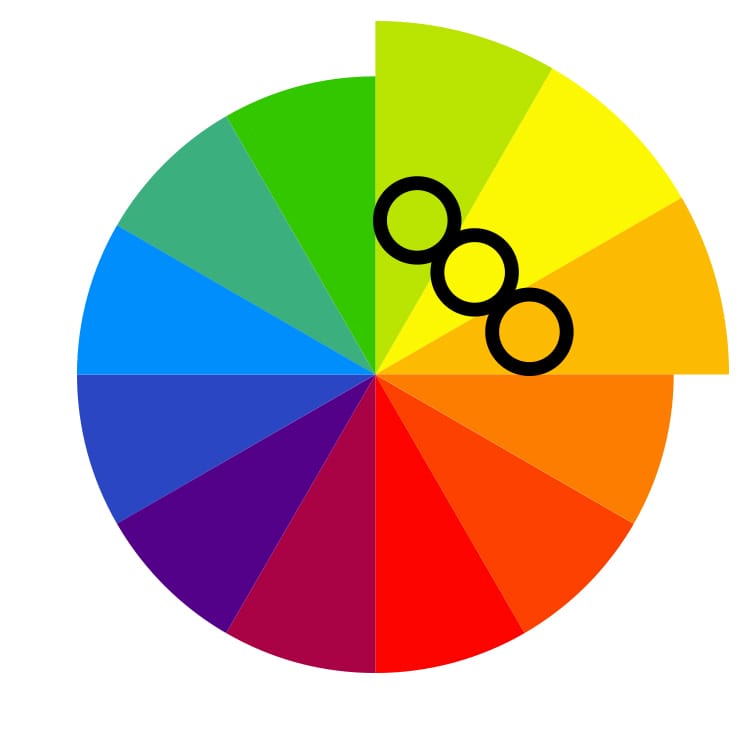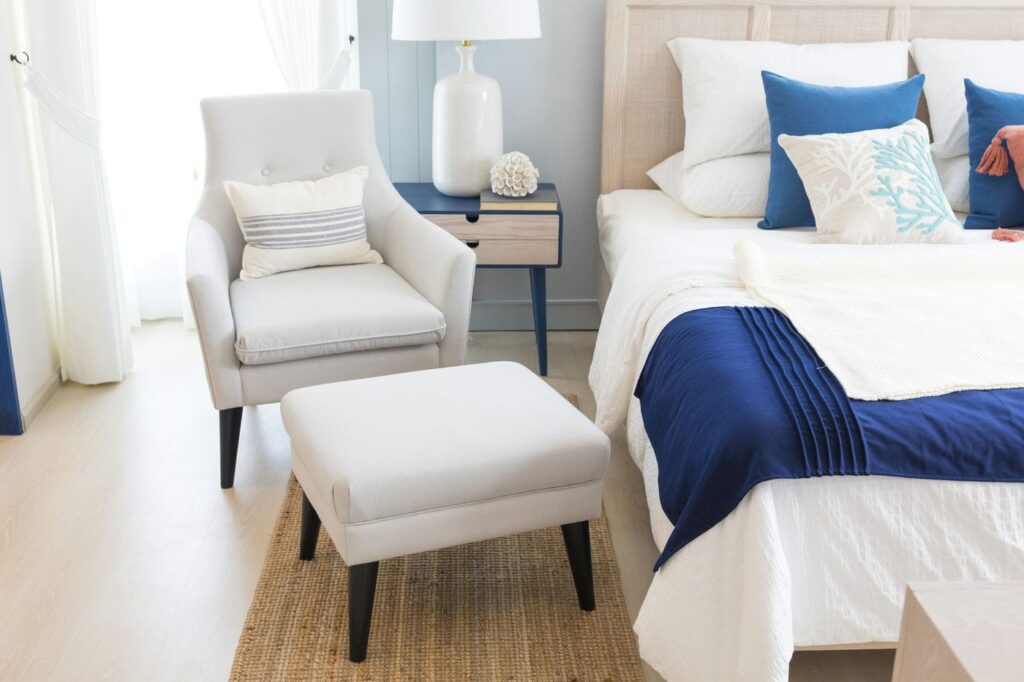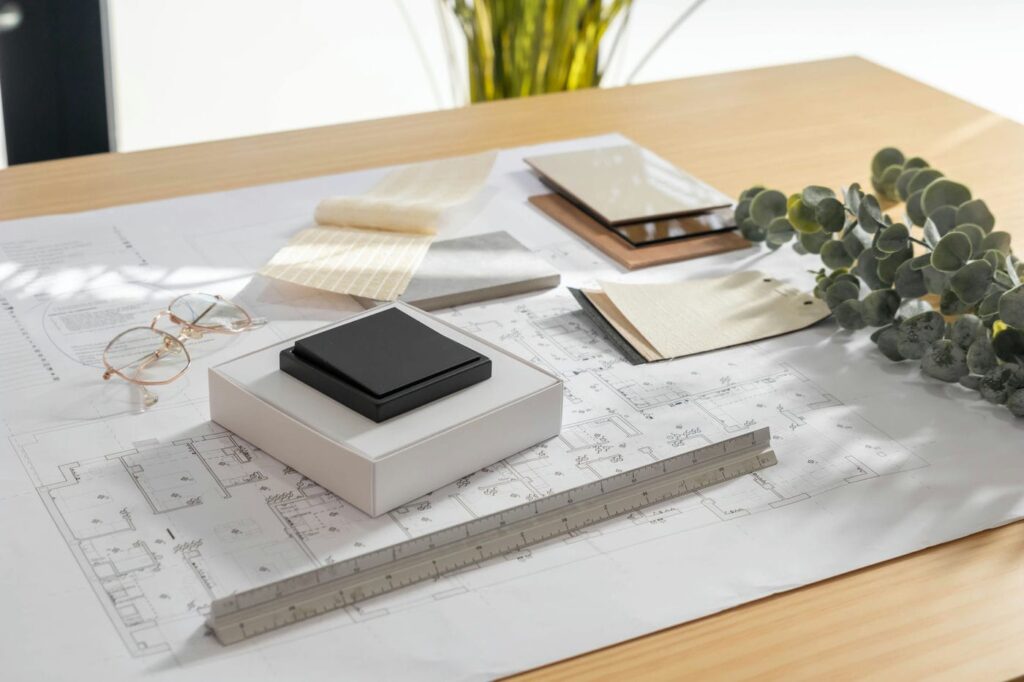
Choosing the perfect colour palette for your home is a crucial step in creating a space that reflects your personality and style. The right colours can transform a room, making it feel cosy, vibrant, or serene, depending on your preferences. However, with so many options available, selecting the ideal hues can be overwhelming. This guide will walk you through the essential steps of understanding colour theory, identifying your style, and analysing your space to help you choose a colour palette that enhances your home’s beauty and functionality, just like a professional interior designer. Get ready to embark on a colourful journey that will breathe new life into your living spaces!
Understanding Colour Theory
Before diving into the selection of colours for your home, it’s essential to grasp the basics of colour theory. This knowledge will serve as the foundation for creating a harmonious and visually appealing palette.
Primary, Secondary, and Tertiary Colours

Primary Colours – The primary colours are red, blue, and yellow. These are the building blocks of all other colours and cannot be created by mixing other hues.

Secondary Colours – Secondary colours are formed by mixing two primary colours. These include green (blue + yellow), orange (red + yellow), and purple (red + blue).

Tertiary Colours – Tertiary colours are created by mixing a primary colour with a secondary colour. Examples include red-orange, yellow-green, and blue-purple. These colours add depth and variety to your palette.
The Colour Wheel
The colour wheel is a visual representation of colours arranged according to their chromatic relationship. It’s a handy tool for understanding how colours interact with each other.

Analogous Colours – These are colours that sit next to each other on the colour wheel, such as blue, blue-green, and green. They create harmonious and serene designs.

Complementary Colours – Complementary colours are opposite each other on the wheel, like blue and orange or red and green. Using these colours together creates a vibrant and dynamic look.

Triadic Colours – Triadic colour schemes involve three colours evenly spaced around the colour wheel, such as red, yellow, and blue. This scheme is balanced and offers a vibrant yet harmonious look.
Warm vs. Cool Colours

Warm Colours – Warm colours, such as reds, oranges, and yellows, evoke feelings of warmth, energy, and excitement. They are great for creating cosy and inviting spaces.

Cool Colours – Cool colours, including blues, greens, and purples, are calming and soothing. They work well in spaces where relaxation and tranquility are desired.
Understanding these fundamentals of colour theory will equip you with the knowledge to create a balanced and aesthetically pleasing colour palette for your home. Next, we’ll explore how to identify your personal style and preferences to further refine your colour choices.
Identifying Your Style and Preferences
Creating a colour palette that truly represents you starts with understanding your personal style and preferences. Here’s how to discover what suits you best:
Reflect on Your Personality
Think about the colours you naturally gravitate towards in your clothing, accessories, and favourite items. Do you prefer bold and vibrant colours, or are you more inclined towards soft and muted tones? Your personal style often mirrors your interior design preferences.
Gather Inspiration
Start by collecting inspiration from various sources. Browse interior design magazines, visit websites like Pinterest, and look through home décor blogs. Create a mood board or a digital collection of images that resonate with you. Pay attention to the common themes and colours that stand out.
Identify the colours you feel most comfortable around. Walk through your home and note which rooms make you feel happy and relaxed. Are there particular colours that stand out? These insights can guide your palette selection.
Seeing colours in a real-life setting can be incredibly helpful. Visit furniture stores, paint showrooms, and model homes to see how different colours work in various spaces and lighting conditions.
Consider Your Lifestyle
Your lifestyle can significantly influence your colour choices. For instance, if you have young children or pets, you might opt for more durable and forgiving colours. If you love entertaining, consider colours that make communal spaces feel inviting and lively.
Emotional Associations
Consider the emotional meanings behind different colours. For example, blue is often associated with calmness and stability, while red can evoke energy and passion. Understanding these associations can help you choose colours that align with the mood you want to create.
Choosing a Colour Scheme

Choosing the right colour scheme is essential to create a harmonious and visually appealing home. This section will guide you through the process of selecting a colour scheme that complements your style and space.
Overview of Popular Colour Schemes
Monochromatic Colour Schemes – A monochromatic scheme uses variations in lightness and saturation of a single colour. This approach creates a clean, cohesive look and adds depth through different shades and tints, perfect for a sophisticated and calming environment.
Analogous Colour Schemes – Analogous colour schemes consist of three colours next to each other on the colour wheel, like blue, blue-green, and green. This combination is harmonious and often found in nature, providing a serene and comfortable look.
Complementary Colour Schemes – Complementary schemes use colours opposite each other on the colour wheel, such as blue and orange or red and green. These combinations create a vibrant, dynamic look, making each colour appear brighter and more lively.
Triadic Colour Schemes – A triadic scheme involves three colours evenly spaced around the colour wheel, such as red, yellow, and blue. This balanced yet vibrant combination offers a dynamic and playful look without overwhelming the space.
Choosing a Scheme for Each Room
Living Room – The living room is a space for relaxation and socializing. Consider a warm, inviting palette with shades of yellow, beige, or light brown to create a cozy atmosphere. Alternatively, bold colours like teal or deep red can make a stylish statement.
Bedroom – Bedrooms benefit from calm and soothing colours. Soft blues, greens, and neutrals can create a relaxing retreat. For a more vibrant look, use these colours as accents against a neutral backdrop.
Kitchen – Kitchens are often the heart of the home, so a bright and lively palette works well. Whites and neutrals combined with pops of colour, such as yellow or green, can make the space feel fresh and clean. Alternatively, darker colours like navy can add elegance.
Bathroom – Bathrooms should promote relaxation and cleanliness. Soft blues, greens, or even crisp whites create a spa-like atmosphere. For a luxurious feel, add metallic accents or deeper hues like charcoal.
Analyzing Your Space

Before finalizing your colour palette, it’s crucial to analyze the specific characteristics of each room. This ensures that your chosen colours enhance the space and work well with its unique features.
Assessing Size and Lighting
The size of a room significantly influences colour selection. Lighter colours can make a small room feel more spacious and airy, while darker hues can create a cozy, intimate atmosphere in larger rooms. Consider the effect you want when choosing colours.
Natural Light – Natural light impacts how colours appear. Rooms with ample sunlight can handle darker and bolder colours, while those with limited natural light benefit from lighter shades to avoid feeling too dark or confined.
Artificial Lighting – Artificial lighting also affects colour perception. Warm lighting enhances warm tones, making them richer, while cool lighting accentuates cool tones. Experiment with your lighting options to see how they impact your chosen colours.
Considering Existing Elements
Take into account the colours of fixed elements in your home, such as flooring, countertops, and built-in cabinetry. These elements will not change and need to complement your new colour palette. For instance, if you have dark wooden floors, lighter wall colours can create balance.
Your existing furniture and décor should also influence your colour choices. Consider the colours of your major furniture pieces, area rugs, and artwork. Aim for a palette that harmonizes with these items rather than clashes with them.
Highlight architectural features like fireplaces, moldings, and unique architectural details with accent colours. These features can become focal points when painted in a contrasting colour, adding depth and interest to the room.
Flow and Cohesion
Ensure a cohesive flow of colours throughout your home. Each room can have its distinct palette, but the colours should complement each other when transitioning from one space to another. This creates a harmonious and unified look.
Mixing bold and neutral tones can create a dynamic yet balanced atmosphere. Use neutral colours as a base and add bold accents through accessories, feature walls, or statement pieces of furniture. This approach allows you to introduce colour without overwhelming the space.
Practical Tips for Space Analysis
Before committing to a colour, test it on your walls. Paint small sections and observe how the colour looks at different times of the day and under various lighting conditions. This gives you a realistic idea of how the colour will appear in your space.
Take photos of your rooms and use digital tools to experiment with different colours. Many paint companies offer online visualizers where you can upload your photos and try out various shades.
Seek Out Professional Advice

Choosing the perfect colour palette for your home can be a challenging task, but you don’t have to do it alone. At Gossip Interiors, our expert interior designers are here to help you every step of the way. With professional advice tailored to your personal style and space, we can create a harmonious and beautiful colour scheme that enhances the beauty and functionality of your home.
Ready to transform your living spaces? Contact us today to schedule a consultation and take the first step toward your dream home. Let our expertise guide you to a stunning and cohesive colour palette that reflects your unique personality. Reach out to Gossip Interiors now and discover the difference professional interior design can make!
